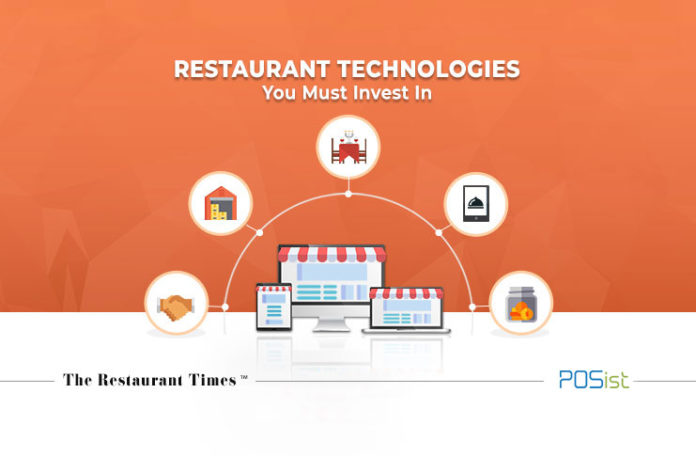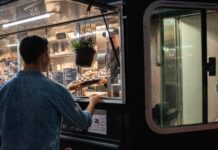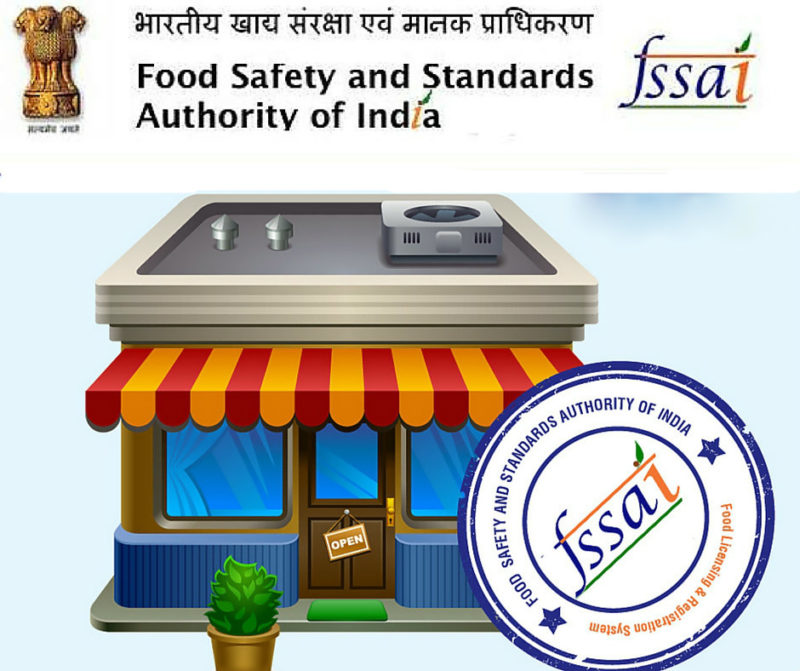As lucrative as it is, the restaurant industry is a cut-throat battlefield where survival is very difficult. Not only are profits thin, but costs are also ever-rising, and labor is erratic. All this makes the industry which is already difficult to flourish in, even more, volatile are brutal. Competition in the restaurant space gives no respite to a restaurant owner either. Thus comes the need for restaurant technologies.
What Are Restaurant Technologies
Technological innovations centered at the needs of restaurant owners constitute ‘Restaurant Technologies.’ A good example will be a Point Of Sales Software. These innovations are not only trending in the restaurant space and making running operations far easier but are shaping the industry itself. Hence, if you are in the restaurant industry, it is almost impossible and highly impractical to survive without these restaurant technologies. Now you may wonder that out of all the restaurant technologies available, which must you go for.
The restaurant technologies that you should invest in depend upon the trends and challenges in the restaurant industry which you operate in. No two markets are the same and the type of challenges that a particular market faces will decide which technology is needed.
For example, the restaurant market in the USA is very different from the restaurant market in India in terms of the challenges. In India, when it comes to consumers, the use of technology is limited. You can not walk into a restaurant and see people comfortably ordering food from an Ipad or a digital menu. Restaurants that keep an Ipad menu are far lesser than those who have a paper menu in place. This is not just casual dining or a kiosk we are talking about but, posh fine dining restaurants as well. Even the waitstaff is mostly seen creating pen and paper tickets not readily embracing this technology even though the trend is slowly picking up. In the States, on the other hand, use of technology from the customer’s end to pre-order, reserve a table or even ordering food at the restaurant is pretty common and adds to the customer experience.
Such diversity in market trends leads to the presence of various types of restaurant technologies. Now coming to your choice of the tech which you must invest in, we have compiled for you a list of must-have restaurant technologies which will make running a restaurant in States a lot easier and give you an edge over your competitors.
5 Restaurant Technologies You Must Invest In To Run A Restaurant In USA
These are the top 5 restaurant technologies that you must invest in. All these innovations are POS integrated and free of the size of your restaurant or the format.
1. Cloud-Based Restaurant POS
The most important technology in a restaurant is its POS software. With innovations in the restaurant technology, many cloud-based POS softwares have come up. A cloud-based POS is different from a legacy POS as it can be operated from anywhere, at any time using cloud technology. Due to this, there are a number of added features that you can take advantage of. The most prominent is third-party integrations.
Third-party integrations come with a guarantee of increased discoverability and more sales as online food delivery platforms are growing at a fast pace and acceptability of home-delivered food has reached its peak. The downside is that not only do these integrations cost a lot, but they also add to your restaurant cost in terms of hardware costs as you will need a separate tab for each integration and labor costs as someone will have to oversee the manual orders coming in and deliver them to the kitchen. Apart from added costs, this system is prone to many miscommunications which can end up costing you more than what you will gain from a third-party integration.
Now how can a cloud-based POS help you solve this?
- A POS software which is synchronized with third-party integrators resolves two out of the three downsides of having a third-party integration. When the integration is POS synchronized, all the orders including your website orders will come directly in your POS software where they will be divided and displayed based on the source.
- This means that on a single PC or tablet, you will be able to manage orders from Doordash, Grubhub and even your own website that too simultaneously. Hence, the hardware cost is cut down to merely one terminal which you would have needed for billing anyway.
- The next is the extra cost of hiring an employee just to track these orders. Because the orders will now directly come into your POS software and be sent to the kitchen through the POS itself, you will not need to employ a staff member for just this task.
- Moreover, now, since the entire process is automated the chances of manual errors are negated.
2. Inventory Management
Managing inventory is an extensive task in a restaurant. For smaller establishments, it is relatively easier but as you move up, inventory management becomes a time-taking task. The fact that your restaurant inventory management is the backbone of your restaurant business does not make the job any easier. With a POS integrated Inventory Management Software, managing inventory becomes easier. Here is how:-
(i) Live Inventory Tracking
With this software, you can keep a clear track of current stock at your outlet in real-time. This means that as and when the dishes are prepared, the software will adjust the numbers itself based on the number of servings and the inventory each serving takes. You will always know what you have in stock, how much stock is left, and what needs to be re-ordered. This will indirectly reflect on your customer service as when you will be tracking your inventory in real-time, the chances of running out of ingredients are very less. When you know that some ingredient is limited, you can train your servers to defer the guests from ordering that dish by recommending them something else. If the guest still wants to have a particular dish, no problem the stock is not over yet. If by any chance you do run out of an ingredient, you can inform the customer who wants that particular dish there and then that the item is not available. Even though it may irritate the customer, it is far better than making the customer wait for the same bad news.
(ii) Closing Stock And Opening Stock
One of the key functions of the opening manager and the closing manager is to count and record the opening and closing stock each day. This process is tedious, takes a long time, is vulnerable to errors and can be misused by the employees. All these issues can be easily resolved using Inventory Management Software. Since it will automatically count and register the opening and closing stock for each day, you will have a clear picture regarding your inventory position. On comparing this figure with sales of the day, you will be able to deduce the amount of food wasted and in extreme scenarios even internal theft.
(iii) Reporting Analytics
A POS integrated technology management software does not just manage inventory count and numbers for you. It also creates precise reports on the exact usage of your inventory. You will get detailed reports regarding the use of each ingredient, the waste generated, variance as well as how fast an ingredient is consumed or not consumed at all. This level of stock understanding will enable you to make data-driven decisions thus reducing your food cost. At the same time, you will be able to track your inventory patterns, understand usage, create better dishes and even track inventory theft which you would have otherwise considered variance and added to your costs.
3. Ipad Ordering
Ipad Menu Ordering or Ipad Ordering is the next restaurant technology that you must invest in. An iPad restaurant ordering system is a direct table to kitchen ordering system that allows your servers to take an order and send it directly to the kitchen through your POS. When a customer places an order, it is directly punched in the iPad designated to a server. An e-ticket is generated within your POS software and will be communicated to your kitchen staff via a kitchen display system which flashes different orders to the kitchen staff. Traditionally a server will have to take an order, go to the kitchen, give the order, come out again and then go back to the kitchen, collect the order and serve it. At the same time, the order will be registered in the POS at the cashier table, and so the cashier or the manager knows exactly how much is ordered at which table. The entire process is automated and based on cloud technology, so there are no hardware issues. What is more, is that it will run even when your internet is down leading to no glitches in between.
The biggest benefit of this technology is that it reflects in the way your operations get streamlined and overall costs come down. Since your wait staff is no longer running around, they can tend to more tables at the same time which means that the productivity of each member would increase. As now the same amount of people are producing more results, labor cost will come down, and efficiency will increase. Your table turnover rate will increase as well thus allowing you to cater to more guests and earn better profits.
4. Tip Management System
Tipping is much debated upon practice today, but until some solid conclusion regarding its need and use is reached, you should invest in a Tip Management System as a restaurant technology. Tips are what your wait staff earns from and a system that can segregate their tips and manage it effectively in case of tips paid via card will not only make judging their performance easier but also motivate your employees to work more and harder not just for the tips but for the restaurant itself.
5. Table Management System
Most customers in the US belong to a tech-savvy generation. Moreover, with the fast-paced lifestyle, no one has the time to wait in a queue for a table. People reserve tables especially if the party is huge. A queue management system will elevate the customer experience from the customer’s end and streamline operations from your end. From the customer’s end, it will make the process of booking a table and setting up a pre-order seamless and hassle-free. From the restaurant’s point of view, it will automate the process of reserving tables and managing pre-orders thus freeing up your staff and streamlining your operations.
Restaurant technologies are shaping the way in which the industry is headed and will have a huge role to play in the future. Hop on the wagon to make the most of the new age restaurant revolution.

















